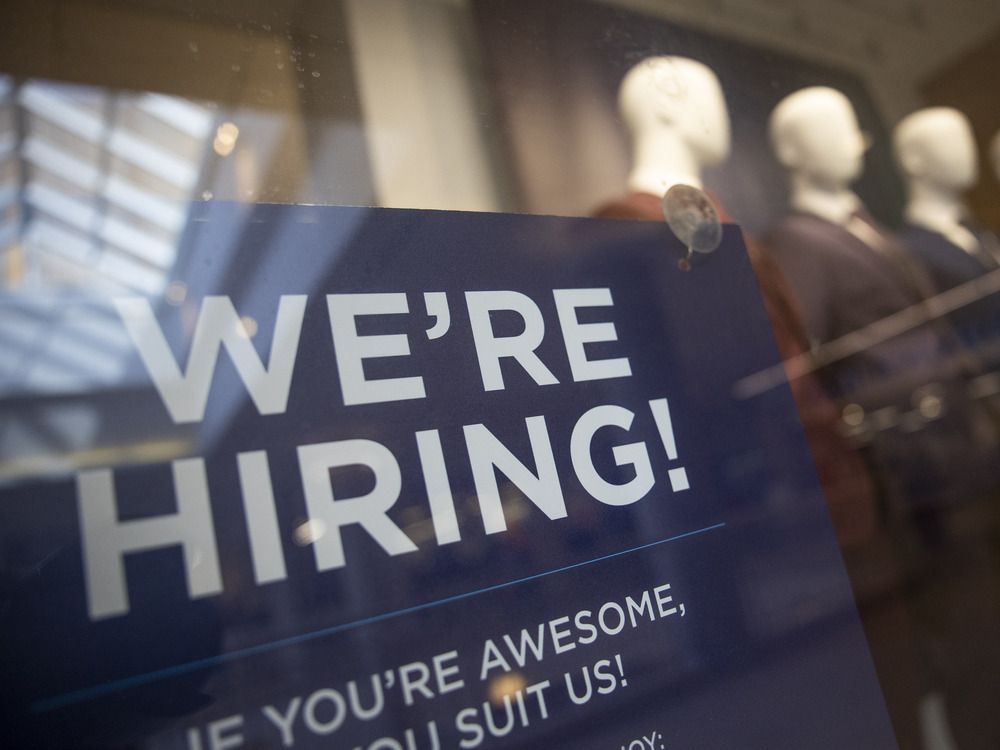Canada has underinvested since the financial crisis and is now over-using labour to make up for it

Article content
The first in a three-part series on why now is the time for companies to invest.
Advertisement 2
Article content
Investing in big, new industrial projects right now might seem asinine to business strategists. Higher interest rates have everyone fixated on recession — not whether there will be one, but when and how deep.
Article content
The prospect of a prolonged banking crisis piles on considerable risk. History suggests that these conditions cause business investment to dry up, remaining arid until it’s clear the economy has legs. At times like these, CFOs are supposed to be closing the vault to all visionary spendthrifts, conserving cash to survive the the big bad.
Article content
But is that really where the economy is at?
Visionaries might counter that demand is where it should be, and that our current problem sits squarely with tight supply. Ergo, we need more industrial capacity to make sure that production can meet demand.
Advertisement 3
Article content
Even if they’re right, that’s no easy feat — getting a building up usually takes more than a year from start to finish, sometimes several. More machinery is a quicker fix, if you can find a place to put it; but it is more than likely tied up in the supply chain snarls that it would be attempting to rectify. So, how can this possibly be an ‘investment moment’?
Since business investment in physical assets shouldn’t be, and on balance rarely is, a knee-jerk reaction to an instant development, then there must be good structural or longer-term reasons for this being an “investment moment.” It turns out there are not just one or two good reasons. In fact, there are enough that airing them requires more than a stand-alone article, which is why this will be the first of three on the subject. So, where do we start?
Article content
Advertisement 4
Article content
Let’s first consider the possibility that we have underinvested since the global financial crisis (GFC). Most would agree that the global economy has on balance spit out sub-par growth since 2008, not really generating a convincing recovery. Then consider the bubble of activity that preceded the crash back in 2008. There was arguably a lot of pre-GFC investment to support the unsustainable level of production, excess that had to be re-absorbed before a true, new investment cycle could begin. Since that pre-event bubble was so huge, investment didn’t really need to ramp up for years — in fact, long enough that business in general might misinterpret it as a structural change, to a low-investment “new normal.”
Advertisement 5
Article content
Drag that on for long enough, and when the economy is finally ready to ramp up, business capacity is years behind. There is a good chance that our post-COVID recovery is discovering just that. Suddenly, we need the capacity, but we can’t get there right away. The result? Inflation that’s not a temporary blip, as we were promised, but a nagging problem that in the absence of a supply-side fix, has us artificially suppressing demand. If this is true, monetary policy ought to be seen as a temporary rein, buying time for business to boost capacity. If they can handle the higher borrowing costs, that is.
If that seems like a stretch, consider that in Canada, business investment as a share of gross domestic product has been well below the long-term average for years — and that at a time of suppressed global growth. More importantly for global capacity, U.S. business investment as a share of GDP took a long time to recover post-GFC, and has not yet returned to pre-GFC levels. The case seems compelling: there’s a need for a significant rise in business investment to support the global economy’s present and future demands.
Advertisement 6
Article content
A second and related point is that we appear to be over-using labour. It makes sense — when caught short, it’s far easier to add workers than to add plants and equipment (assuming the two are reasonably substitutable). Then, when it becomes apparent that labour is getting tight, business panics, and over-hires; better to have a healthy buffer of workers than to run lean and risk losing enough head count that lines or even whole operations get shut down.
This is far more visible than the investment situation. Everyone knows we have record-low unemployment in most OECD nations. In Canada, there is a higher number of employees for each unit of GDP, a feature of the post-GFC period. Compared with the long-term trend, a crude calculation has us employing 700,000 to 800,000 excess workers. Cut that in half, and it’s still huge.
Advertisement 7
Article content
The flip side of this is labour productivity, which has swooned in recent years. The remedy isn’t to replace all of these workers with robots. But clearly we have a critical labour shortage, and business is generally desperate for remedies. Higher business investment would relieve this pressure, and free up workers for those other parts of the economy where tight labour supply is severely constraining output.
Labour constraints aren’t likely to improve. A third argument for higher investment is our structurally skinny demographic situation. Many are hailing Canada’s outsized immigration influx in 2022 as a cure to this chronic ill. Not so fast; immigration numbers were boosted last year by 607,782 non-permanent residents (we typically receive about 26,000), abetted by Ukrainians fleeing the war. We can’t (nor should we) count on similar future surges, unless we can be assured that it is possible to boost Canada’s regular immigrant intakes.
Advertisement 8
Article content
There are plans to increase immigration to 500,000 per year; we’ve struggled in the past to get that number much above 300,000. I have argued elsewhere that as attractive as Canada is, there is increased competition from other population-constrained high-income countries; and increased competition from faster growth and the attendant opportunities in the home country.
-

Housing’s hard stop spells trouble ahead for economy
-

This is how Canada can fix chronic labour shortages
-

Bank of Canada’s awful medicine is what economy needs
A key means of securing our future is increasing capital’s contribution to output — which as a bonus, generally improves productivity. This is just a start — there are at least six more key reasons to hail this point in time as an investment moment. If the CFOs were twitchy after reading the first paragraph, they will now be in a full-blown sweat. This article’s three factors are reason enough to begin thinking about keeping the coffers open, and the dust off the blueprints. To be continued.
Peter Hall is chief executive of Econosphere Inc. and a former chief economist at Export Development Canada.
Why companies should invest now, even if a recession is coming
2023-03-26 13:00:11








Comments
Postmedia is committed to maintaining a lively but civil forum for discussion and encourage all readers to share their views on our articles. Comments may take up to an hour for moderation before appearing on the site. We ask you to keep your comments relevant and respectful. We have enabled email notifications—you will now receive an email if you receive a reply to your comment, there is an update to a comment thread you follow or if a user you follow comments. Visit our Community Guidelines for more information and details on how to adjust your email settings.
Join the Conversation